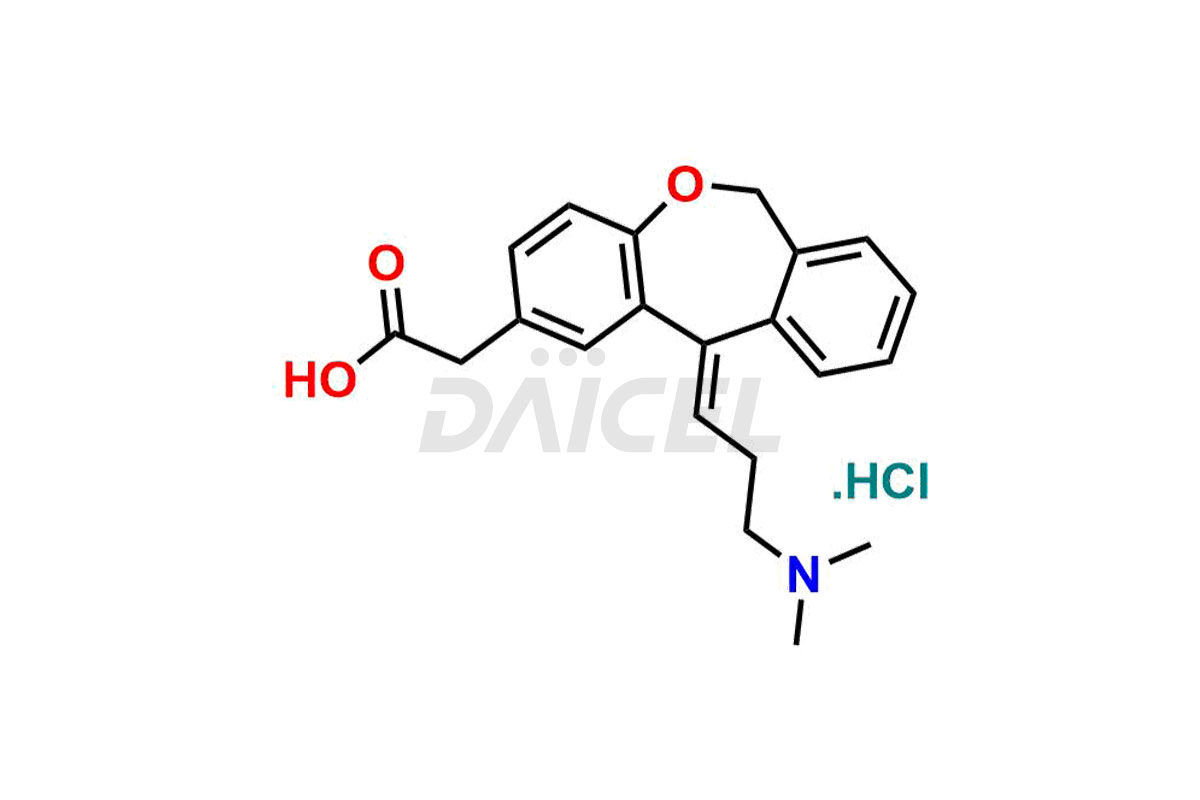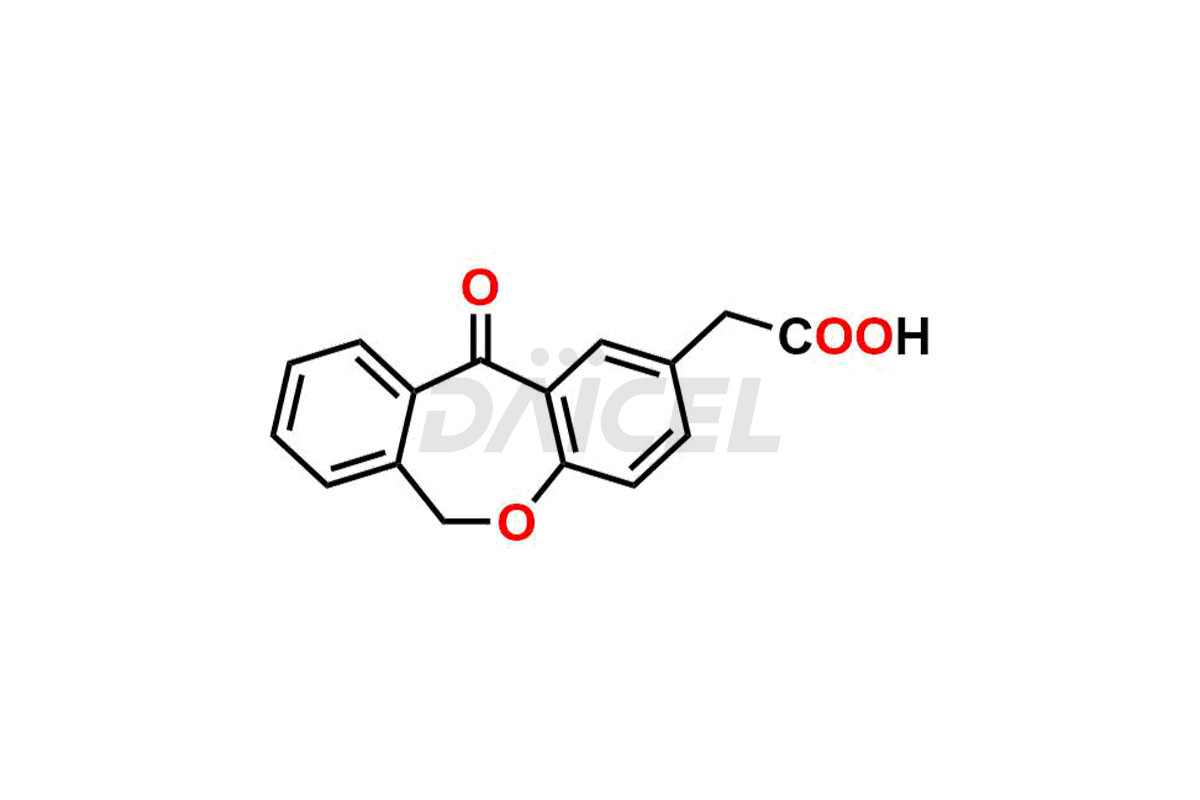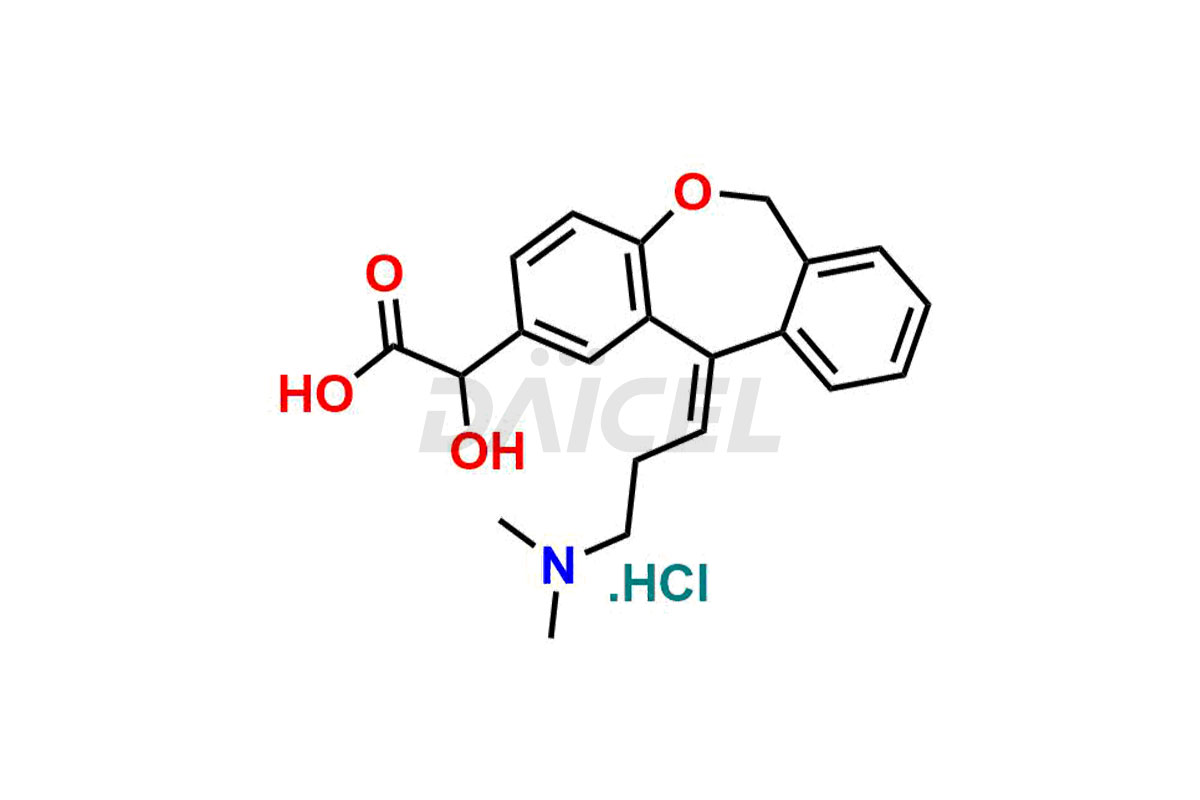Olopatadine
General Information
Olopatadine Impurities and Olopatadine
Daicel Pharma synthesizes high-quality Olopatadine impurities, Olopatadine Carbaldehyde Hydrochloride, Olopatadine E-isomer Hydrochloride, Olopatadine related compound C, and α-Hydroxy Olopatadine Hydrochloride, which are crucial in the analysis of the quality, stability, and biological safety of the active pharmaceutical ingredient Olopatadine. Moreover, Daicel Pharma offers custom synthesis of Olopatadine impurities and delivers them globally.
Olopatadine [CAS: 113806-05-6] is a medicine that has dual functions as a histamine H1 receptor antagonist and a mast cell stabilizer, which helps to alleviate allergies. It is an antiallergic agent, a dibenzoxipine derivative for treating allergic rhinitis, urticaria, and bronchial asthma.
Olopatadine: Use and Commercial Availability
Olopatadine is available as an ophthalmic solution for treating ocular signs and allergic conjunctivitis. The drug is marketed under brand names, including Opatanol, Pataday, Patanase, and Ryaltris.
Olopatadine Structure and Mechanism of Action 
The chemical name of Olopatadine is (11Z)-11-[3-(Dimethylamino)propylidene]-6,11-dihydrodibenz[b,e]oxepin-2-acetic acid. Its chemical formula is C21H23NO3, and its molecular weight is approximately 337.4 g/mol.
Olopatadine inhibits mast cell mediator release and possesses histamine H1 receptor antagonist activity. With the blockage of receptors, histamine has no effect, so there is a decrease in allergy symptoms.
Olopatadine Impurities and Synthesis
The impurities in Olopatadine arise from the drug’s synthetic process, degradation, and storage conditions. These impurities can affect the drug’s quality, safety, and efficacy and therefore need close monitoring and control during drug manufacturing1 and storage.
Daicel offers a Certificate of Analysis (CoA) from a cGMP-compliant analytical facility for Olopatadine impurity standards, Olopatadine Carbaldehyde Hydrochloride, Olopatadine E-isomer Hydrochloride, Olopatadine related compound C, and α-Hydroxy Olopatadine Hydrochloride. The CoA includes complete characterization data, such as 1H NMR, 13C NMR, IR, MASS, and HPLC purity2,3. We also provide 13C-DEPT and CHN on request. We give a complete characterization report on delivery. Daicel has the technology and expertise to prepare any unknown Olopatadine impurity or degradation product.
References
FAQ's
References
- Oshima, Etsuo; Kumazawa, Toshiaki; Otaki, Shizuo; Obase, Hiroyuki; Ohmori, Kenji; Ishii, Hidee; Manabe, Haruhiko; Tamura, Tadafumi; Shuto, Katsuichi, Dibenz(B,E)Oxepin Derivative And Pharmaceutical Compositions Thereof, Kyowa Hakko Kogyo Co., Ltd., Japan, US5116863A, May 26, 1992
- Fujita, Kazuhiro; Magara, Hiroshi; Kobayashi, Hiroyuki, Determination of olopatadine, a new antiallergic agent, and its metabolites in human plasma by high-performance liquid chromatography with electrospray ionization tandem mass spectrometry, Journal of Chromatography B: Biomedical Sciences and Applications, Volume: 731, Issue: 2, Pages: 345-352, 1999
- Maksic, Jelena; Jovanovic, Marko; Rakic, Tijana; Popovic, Igor; Ivanovic, Darko; Jancic-Stojanovic, Biljana, Chromatographic analysis of olopatadine in hydrophilic interaction liquid chromatography, Journal of Chromatographic Science, Volume: 53, Issue: 5, Pages: 680-686, 2015
Frequently Asked Questions
What are the sources of Olopatadine impurities?
Impurities in Olopatadine arise from the starting materials, reagents, or by-products. They can also form during storage or due to degradation.
How can related substances be detected in Olopatadine?
Methods such as LC-MS and HPLC help detect related substances in Olopatadine.
What are the risks Olopatadine impurities have on the drug?
Impurities in Olopatadine pose risks to patients with toxicity, decreased effectiveness, or adverse reactions to the drug.
How can Olopatadine impurities be reduced or eliminated?
Many methods reduce or eliminate Olopatadine impurities, like optimization of the synthetic process, good quality raw materials and reagents, controlling reaction conditions, and minimizing exposure to environmental factors. In addition, effective purification techniques and analytical methods, such as HPLC or LC-MS, help detect impurities and ensure the drug meets regulatory standards.
What are the temperature conditions required to store Olopatadine impurities?
Olopatadine impurities are stored at a controlled room temperature between 2-8 ⁰C or as indicated on the Certificate of Analysis (CoA).
Note: Products protected by valid patents by a manufacturer are not offered for sale in countries having patent protection. The sale of such products constitutes a patent infringement, and its liability is at the buyer's risk.





